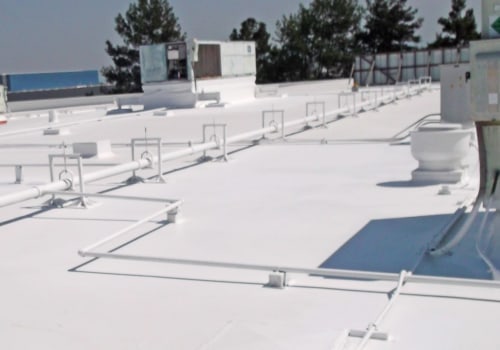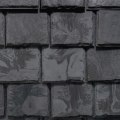The process of repairing damaged membranes or coatings on commercial roofs is a critical part of ensuring long-term roof performance and longevity. Water intrusion, thermal cycling, UV exposure, and other environmental conditions can all contribute to the deterioration of roofing materials, leading to roof failure if left unchecked. But with proper maintenance and timely repairs, commercial roofs can remain waterproof and protected for years to come. In this article, we'll discuss the importance of repairing damaged membranes or coatings and the steps necessary to ensure optimal protection.
Common Causes of Damage
When it comes to commercial roofs, there are a variety of factors that can cause damage to the membranes or coatings. Common causes of damage include weather conditions such as high winds, hail, and heavy rain, as well as improper installation. High winds can cause the membrane to be ripped away from the roof decking, leaving the underlying surface exposed and vulnerable to further damage. Hail can cause punctures in the membrane, which can lead to leaks and further damage.Heavy rains can saturate the underlying decking, causing it to rot and weakening the integrity of the roof. In addition, improper installation can lead to problems with the membranes or coatings. For example, if the membrane is not correctly sealed around penetrations or other areas, it can lead to water infiltration and damage. Furthermore, if the membrane is not correctly installed in areas such as valleys or ridges, it can lead to premature failure and deterioration of the membrane or coating.
Types of Damage
When it comes to commercial roofing, there are several different types of damage that can occur. These include cracking, puncturing, UV degradation, and water damage.To identify the types of damage, you should inspect the roof for any signs of wear and tear. Cracking is one of the most common types of damage to commercial roofs. It can be caused by a variety of factors such as temperature changes, ground movement, and pressure from wind or hail. Cracks may start small but can eventually lead to larger issues if left unrepaired.
Puncturing can occur due to objects such as tree branches or hail. It is important to repair any punctures quickly to prevent water from seeping through and causing more damage. UV degradation occurs when the sun's ultraviolet rays break down the material on the roof. This can lead to fading and cracking, making it important to regularly inspect the roof for signs of wear and tear.
Finally, water damage can occur due to a variety of causes such as poor drainage or a faulty roofing system. If left unrepaired, water damage can lead to a variety of problems including mold growth and structural damage.
Hiring a Professional Roofer
When it comes to repairing damaged membranes and coatings on a commercial roof, it is often best to hire a professional roofer. Professional roofers have the necessary experience and training to ensure that repairs are done properly and that the roof remains in good condition. Hiring a professional roofer can also help save time and money, as they can diagnose and repair problems quickly. Professional roofers also have access to the latest technology and materials, allowing them to repair roofs more effectively and efficiently.They also have the necessary tools and equipment to complete repairs safely and correctly. Additionally, professional roofers can provide advice on how to maintain the roof and prevent future damage. When hiring a professional roofer for repairs, it is important to make sure that they are licensed and insured. This will ensure that the roofer is qualified to do the job and that any potential damages will be covered by the insurer. It is also important to ask for references so that you can get an idea of what kind of work the roofer has done in the past. Hiring a professional roofer for repairs is one of the best ways to ensure that your commercial roof remains in good condition.
By taking the time to research potential roofers and making sure that they are qualified and experienced, you can be sure that your repairs will be done correctly and safely.
Repair Methods
When it comes to repairing damaged membranes or coatings on commercial roofs, there are a few different approaches that can be taken. The type of repair method used will depend on the extent of the damage and the type of membrane or coating that is being repaired. Patching is one of the more common repair methods, and involves using a patch kit to fill in small holes or cracks in the membrane or coating. This method is often used for minor damage, such as a puncture or tear, and is relatively easy to do.For more extensive damage, such as a large hole or crack, replacing the membrane or coating may be necessary. This can involve removing the existing membrane or coating and installing a new one. In some cases, the entire roof may need to be replaced if the damage is too great. It's important to have a professional inspect the roof before attempting any repairs in order to determine which repair method is best. In addition to patching and replacing, there are other methods that can be used to repair damaged membranes or coatings.
Sealing is one option, which involves applying a sealant to cover up any holes or cracks in order to prevent further damage. Resurfacing is another option that involves applying a layer of material over the existing membrane or coating in order to help protect it from further damage. Regardless of which repair method is chosen, it's important to ensure that it's done properly in order to prevent further damage.
Protection from Future Damage
When it comes to protecting your commercial roof from future damage, regular inspections and maintenance are key. Regular inspections can identify any issues that need to be addressed before they become serious, saving you time and money in the long run.Additionally, regular maintenance can help prevent future damage from occurring and keep your roof in good condition for many years to come. Inspections should be conducted by a qualified professional to ensure any potential issues are properly identified and addressed. During an inspection, a professional will look for signs of wear and tear, as well as any other potential problems. If any issues are identified, they should be addressed as soon as possible to prevent further damage.
Regular maintenance should also be carried out to ensure the roof is kept in good condition. This can include cleaning the roof regularly, replacing worn or damaged materials, and sealing any cracks or gaps. Additionally, it is important to check the roof for any debris that could be causing damage. By ensuring the roof is kept in good condition, you can reduce the risk of future damage and extend its lifespan.
Finally, it is important to keep up with any manufacturer’s instructions for repair or replacement. Following these instructions can help ensure the roof is repaired correctly and can help prevent future damage.










